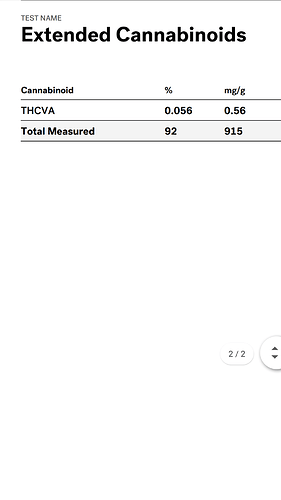Dealing with the CBC/D10 controversy, I would be very glad to get a hand on a “certified” d10 rich sample.
I use GC-FID, with a HP35MS column. The method I use is not that fast… I mainly analyse natural CBD product and quantify 10 different cannabinoids: CBD, CBDv, CBG, delta8THC, delta9THC, THCv, CBN, CBC, CBL, and exoTHC (this one is so far absent of natural stuff). With time, I have observed a series of trends in cannabinoids ratios in the CBD strains, pretty systematic, impacted by genetic and growth conditions… There are few other mysteries peak that are systematically here, I did not identify those so far, I guess there is CBT and the other THC isomers, also CBGv in CBG strains, perhaps some terpenes…
So far, I simply identified CBC based on one standards, and on various studies I read stating CBD plants produce a little bit of CBC. I observe that, if this is indeed CBC, in normally comes in the same proportions as delta9 THC in most current strains (indoor bred), slightly higher. Some rare outdoor strains, in specific conditions, gives much higher levels (upt to 5 times delta 9 THC amounts)… Delta 9 comes in proportions usually 20-32 times lower than CBD (rarely below), and delta8 at 1% the CBD level.
In natural CBD products, I usually observe a small peak next to CBC, badly separated but still distinguishable, which I attributed so far to delta 10 THC. Now that more and more engineered product (especially distillates and/or synthesis trials) comes into my hands, I observe contradicting trends regarding the CBC/d10 peak shape, and ratio regarding other THC isomers… I cannot tell who in this discussion is more right regarding possibility of CBC synthesis or not. I have no clear idea what is going on here, I would like to know more.
Thus I need to find some d10. Where is it ?

